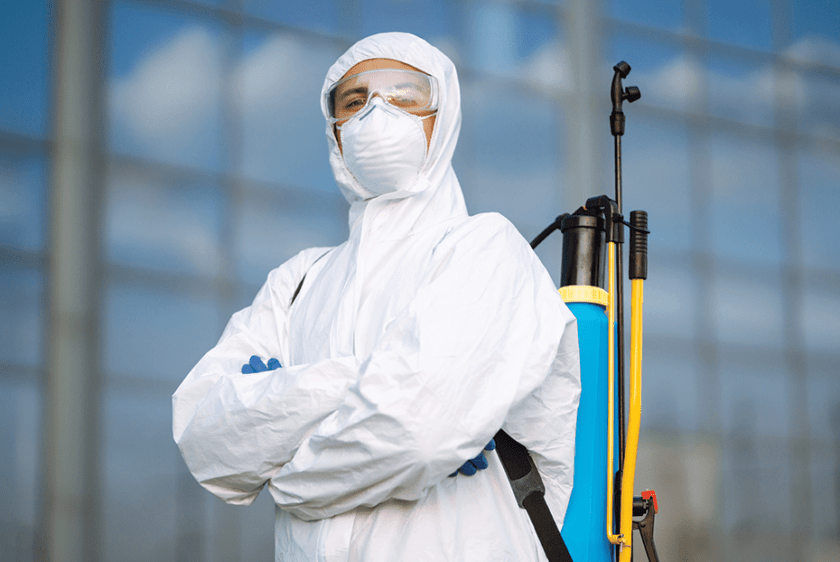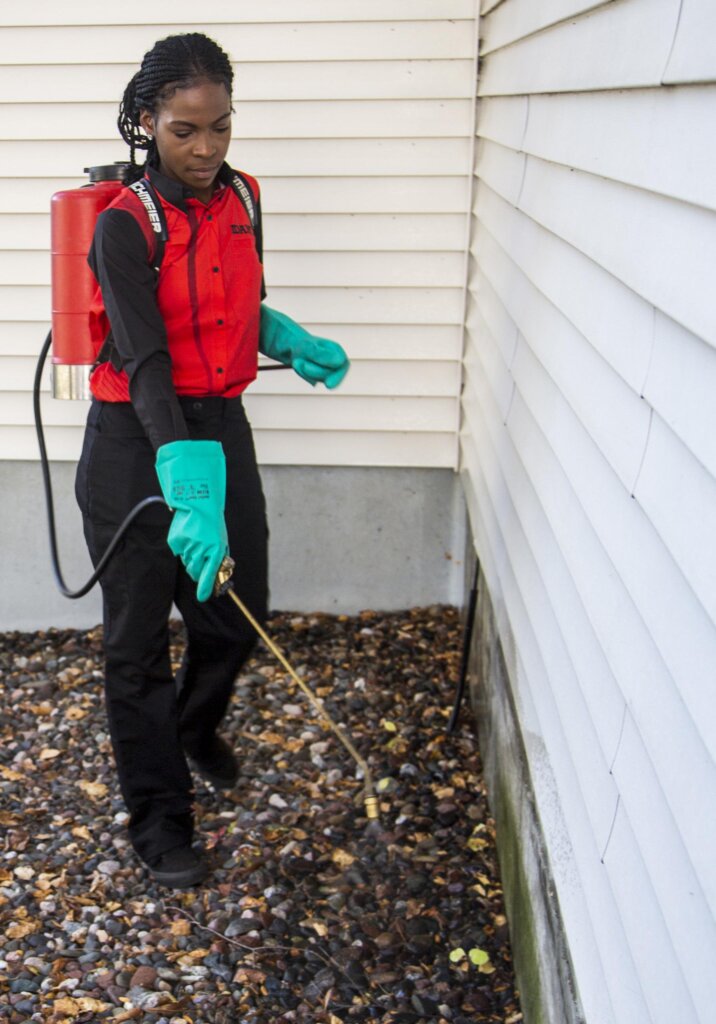End infestations before they spread with Pest Control services today.
Eco-Friendly Bug Control Approaches for Taking Care Of Wildlife in Urban Areas
Urban locations often discover themselves at the junction of human task and wildlife, resulting in special obstacles in pest administration. Green approaches highlight lasting conjunction, using strategies such as habitat modification and natural repellents to alleviate human-wildlife problems. These strategies not only safeguard the atmosphere however likewise improve neighborhood involvement in wild animals monitoring. As city populations continue to grow, comprehending the characteristics of wild animals communications ends up being progressively vital. What cutting-edge methods can be implemented to guarantee both ecological balance and metropolitan security? Exploring this question reveals a compelling landscape of possible services.
Comprehending Urban Wildlife Characteristics
Comprehending Urban Wildlife Characteristics is vital for developing reliable and green bug control techniques. Urban locations are progressively becoming environments for different wildlife varieties, driven by aspects such as habitat fragmentation, food schedule, and human infringement. Recognizing these characteristics permits a nuanced approach to pest monitoring that aligns with eco-friendly principles.
Urban wild animals usually consists of species such as raccoons, squirrels, and birds, which adapt to city settings, discovering niches in eco-friendly spaces, parks, and even suburbs. Their visibility can lead to disputes with human beings, especially when they manipulate personnels for food and sanctuary. Understanding the behaviors and eco-friendly roles of these species notifies strategies that lessen adverse interactions while promoting biodiversity.
In addition, acknowledging the interdependencies within metropolitan ecosystems assists in identifying important locations for habitat conservation and reconstruction. This expertise contributes to the advancement of incorporated pest administration (IPM) strategies that consider the ecological balance, therefore reducing reliance on dangerous chemicals. By promoting conjunction in between people and metropolitan wild animals, cities can develop much healthier settings that profit both homeowners and neighborhood ecosystems, leading the way for sustainable urban living.
Natural Repellents and Deterrents
Natural repellents and deterrents offer a lasting alternative to conventional pest control methods by utilizing the power of nature to keep unwanted varieties away. These green remedies commonly make use of plant-based active ingredients, necessary oils, and various other naturally occurring substances that hinder parasites without hurting the environment.
One effective all-natural repellent is peppermint oil, which is understood to ward off rodents and insects. Its solid fragrance is unpleasant to many parasites, making it a prominent option for urban setups. Vinegar and citrus peels can serve as deterrents, as their solid odors are typically uninviting to different wild animals.
Furthermore, diatomaceous earth is an all-natural powder that can be spread in locations susceptible to insect task, properly drying out and preventing insects without posing threats to non-target types. Garlic sprays and neem oil are identified for their capacity to ward off a broad range of bugs, including both pests and larger wild animals.
Executing these all-natural repellents not only minimizes reliance on chemical pesticides but likewise advertises a healthier city environment, cultivating an extra well balanced conjunction in between humans and wild animals. By making use of these approaches, metropolitan locations can effectively handle parasite populaces while reducing environmental influence.
Environment Modification Techniques
Efficient environment alteration strategies play an important duty in sustainable insect administration by changing the setting to make it much less conducive to pest infestations. By comprehending the environmental characteristics of city locations, homeowner can apply critical alterations that deter pests while promoting biodiversity.
(Pest Control PortCharlotte)One key technique involves maintaining appropriate cleanliness. This consists of routine waste elimination, securing trash bins, and getting rid of standing water to minimize reproducing websites for bugs and rats. Furthermore, landscape design methods such as choosing indigenous plants can improve eco-friendly equilibrium, supplying environments for valuable microorganisms while decreasing sources for parasites.
Another vital technique is to seal entry factors in buildings. Inspecting and fixing fractures in foundations, wall surfaces, and home windows can substantially decrease pest accessibility. Additionally, creating physical obstacles, such as fences or plant buffers, can hinder wildlife movement right into human-inhabited areas.
Integrated Bug Management Practices
Structure upon habitat adjustment strategies, incorporated bug management (IPM) methods supply a holistic technique to controlling pest populaces while lessening environmental influence. IPM combines different strategies, including biological, cultural, mechanical, and chemical controls, to attain effective bug administration.
Organic control involves the introduction of all-natural predators or parasites to minimize pest populations. Social techniques, such as crop rotation and hygiene, interfere with pest life cycles and reduce their environments - Pest Control. Mechanical controls, like traps and barriers, supply prompt remedy for insect stress without chemical treatment
Chemical controls are utilized as a last hope, concentrating on targeted applications that restrict injury to non-target species and the environment. The selection of ecologically pleasant chemicals, when necessary, is essential to the IPM framework. Furthermore, monitoring insect populations and evaluating prospective damages assists educate decision-making, making certain that interventions are prompt and efficient.
Community Involvement and Education

(Flea control Port Charlotte)Workshops and informational sessions can outfit homeowners with knowledge about native types, environment preservation, and reliable safe insect administration techniques. Collaboration with schools, neighborhood companies, and government agencies further enhances instructional outreach, making certain that crucial details reaches diverse target markets.
Additionally, community-led efforts, such as neighborhood clean-up days and environment reconstruction jobs, not only advertise biodiversity however also strengthen area ties. Pest Control. By urging citizens to share their experiences and observations, areas can establish targeted techniques that address details regional pest concerns
Incorporating responses from citizens into parasite administration intends allows a more receptive and adaptive technique to wildlife obstacles. Ultimately, educated and engaged areas are key to attaining long-term success in green insect control, bring about healthier city environments that appreciate both human and ecological requirements.

Conclusion
In final thought, green pest control approaches offer sustainable options for taking care of urban wildlife. By prioritizing habitat adjustment, making use of all-natural repellents, and implementing integrated insect monitoring techniques, communities can foster a harmonious coexistence with regional animals. Involving homeowners via education and learning boosts recognition and urges responsible wild animals communications. Inevitably, these strategies why not try here not only protect biodiversity but also promote ecological wellness, guaranteeing metropolitan areas remain dynamic ecological communities where human beings and wildlife grow with each other.